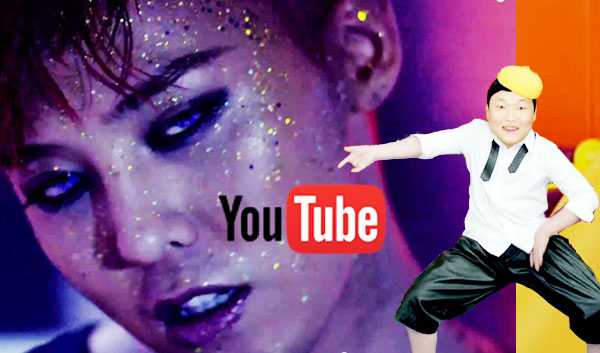Video Analysis by Jean Kyna Baltazar
Jay Park’s 12th digital single “Solo” (featuring Hoody) was produced by Cha Cha Malone in 2015. The music video was directed by Jinooya Park, who has worked closely with Jay Park numerous times, and also with other Korean idols such as WINNER, Taemin of SHINee and Ten of NCT. “Solo” is a song about a man who wishes to date this girl, but she is unsure of his sincerity. The cinematography and the setting bring life to the lyrics, more specifically the different aspects of Jay Park’s life.
“Solo” music video is a departure from Park’s usual high-budget music videos. The majority of the video consists of raw footages of Jay Park impressing the shy photographer, played by Kim Jangmi of Heart Signal, hoping that she is single. In their first meeting (0:35), the director focuses out for about five seconds, then quickly pans the camera to Jay Park and his staff walking away from the check-in counter in the hotel and focuses in to Park taking another glance at her. Instead of using a professional camera for this scene, the director opted out for a handheld camera to make their interaction appear more candid, which ties in with the song’s theme. The amateur footages of Park’s off-cam life juxtapose his flashy celebrity life. Aside from the romantic scenes, the video also features a few scenes of Jay Park hanging out with his staffs, Loco, and Tablo at the airport before flying to New York. In the next scenes, we see him helping out the photographer with her luggage and giving her a towel after their workout, proving his sincerity and dedication towards her “ain’t puppy love” (3:01). The lines, “and if you want to, I’ll retire right away”, further confirm my point that he is serious with his feelings for her (3:24). These scenes show us that Jay Park is any other guy out there: he goofs around his colleagues, for instance, him diving onto the ground at the airport upon seeing Tablo and Loco; or he turns into a shy boy whenever he is around her. As opposed to the scenes where he has hair done and “work” clothes on for the photoshoot, Park is seen acting professional, although he secretly looks at her lovingly or goes near her when no one is looking.
The stunning skyscrapers, the bustling streets of New York, and the beautiful scenery overlooking the iconic Brooklyn bridge perfectly set the mood. Having scenes of Park singing the lyrics or the two leads together alone allows the audience to focus on the romance.
The artificiality of the sets allows the performers to wield authority over the space by breathing life into the space through their physical presence and dance. Hence, they do not exist in, nor compete with, a “real” place or natural environment that could undercut their primary agency in the mise-en-scene. (Unger 2015: 37)
Yet, we see Park bidding his leading lady a goodbye around the other staffs and people passing by in the sidewalk (4:05-20). The scene implies that they did not end up being together, unlike in fan-idol movies or dramas, while it also suggests that celebrities get the same experiences as ordinary people do, in this case, a heartbreak. Throughout the video, Jay Park keeps on distancing himself his role as an idol to clearly communicate that he “does not wish to be identified in terms of the virtual self it implies” (Auslander 2015: 326). He wants the photographer to see him as a guy wanting to date her for real, unlike some top stars who play around with women. By adding the VHS video camera feel to certain scenes makes it easier for to the viewers to view the artist Park as the human Park in this video. Therefore, “Solo” is about being honest, and the director effectively communicates the essence of the song by choosing the right cinematic techniques and right location sites.
Bibliography
“박재범 Jay Park – Solo (Feat. Hoody) Official Music Video.” Youtube video, 4:45. Posted by “JAY PARK,” October 2, 2015. https://www.youtube.com/watch?v=4POUDVKNXVI
Auslander, Philip. “Everybody’s in Show Biz: Performing Star Identity in Popular Music.” The SAGE Handbook of Popular Music, edited by Andy Bennet and Steve Waksman. 317-331. Los Angeles: SAGE reference, 2015.
“Jay Park – Solo (Feat. Hoody).” colourcodedlyrics. https://colorcodedlyrics.com/2015/10/jay-park-solo/ (accessed 12/1/18).
Unger, Michael A. “The Astoria of Presentation: Deconstructing the Genre of K-pop Girl Group Music Videos in South Korea.” Journal of Popular Music Studies 27, no. 1 (2015): 25-47.

 an artist financially stable. According to a news report by JTBC Newsroom from August 21st, 2017, an artist makes 0.42 won, which is about $0.00042 per streaming. In a given example, Heize had only earned 2.7 million won, about $2,700, in spite of topping every chart ranking in July 2017. The news provides a breakdown of the profit: 40% for the distribution; 44% for the production; 10% for composition/writing/editing; and the remaining 6% goes to the artist. This reveals that the artist themselves earn the least in streaming, which has led to some artists to participate in song writing.
an artist financially stable. According to a news report by JTBC Newsroom from August 21st, 2017, an artist makes 0.42 won, which is about $0.00042 per streaming. In a given example, Heize had only earned 2.7 million won, about $2,700, in spite of topping every chart ranking in July 2017. The news provides a breakdown of the profit: 40% for the distribution; 44% for the production; 10% for composition/writing/editing; and the remaining 6% goes to the artist. This reveals that the artist themselves earn the least in streaming, which has led to some artists to participate in song writing.